Liberating Our Stories
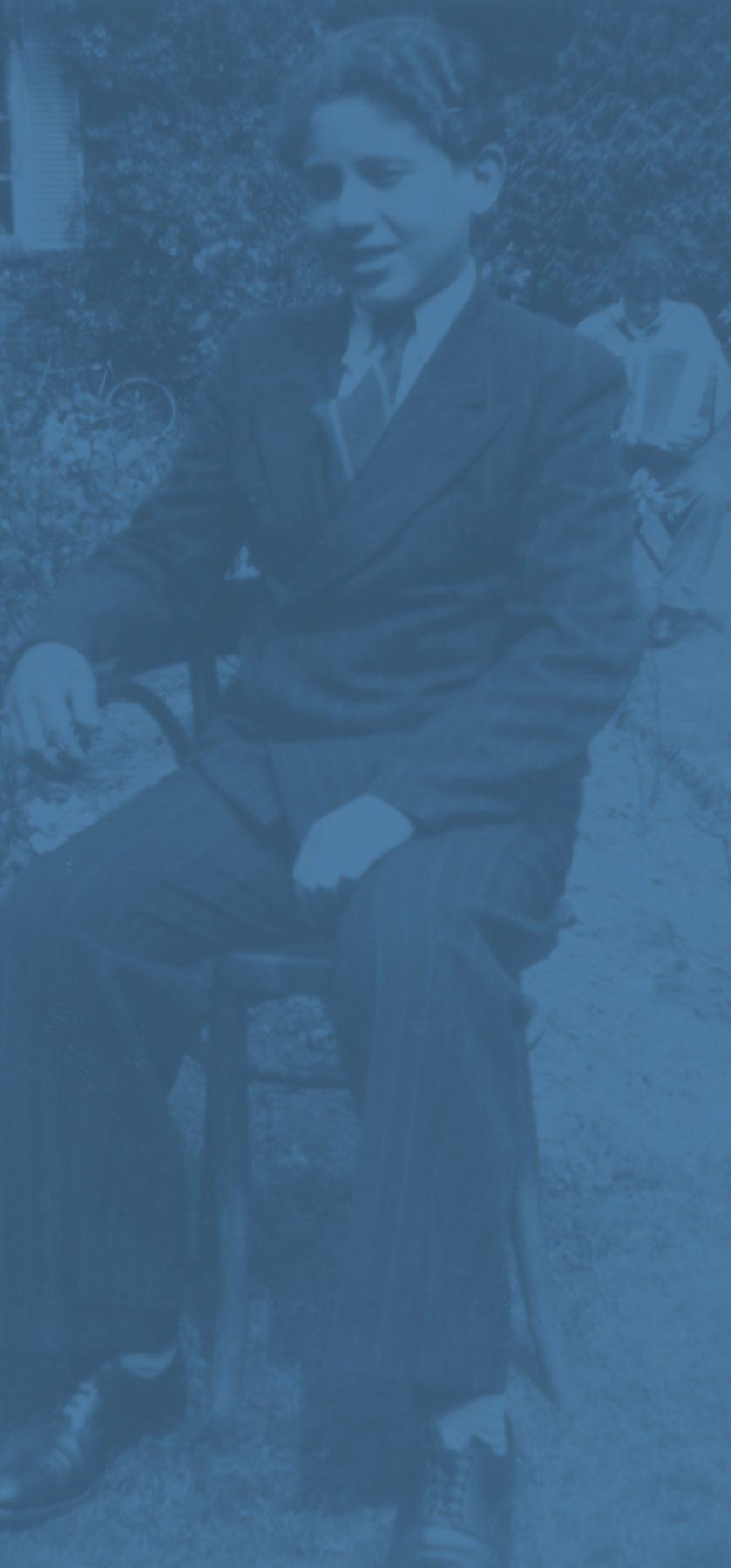
Pinchas Gutter
Born
1932, Lodz, Poland
Survived the War
In the Warsaw ghetto and in concentration camps and forced labour camps
Liberation Date
May 1945, Theresienstadt, Czechoslovakia (now Czech Republic)
Liberators
Soviet Red Army
The only surviving member of his family, Pinchas Gutter was twelve years old when the Nazis evacuated the forced labour camp of Colditz in Germany in April 1945. Pinchas and his fellow inmates were sent on a death march for more than two terrible weeks until they arrived at the Theresienstadt camp and ghetto in Czechoslovakia. The death march had left Pinchas close to starvation. Would he be able to hold on until the Soviet army made it to the camp?
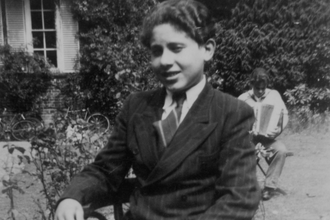
Pinchas at around age fourteen, wearing his new suit after the war. Ascot, England, 1946.
I remember the day of liberation quite vividly. In the morning, the first thing that we noticed was that the Czech gendarmes and German guards had disappeared; then, Soviet frontline soldiers, mainly Tatars and Uzbeks, started coming through the gates. After a while, we all rushed out and I found myself with a band of youth who were wandering around.
As I was walking beside a field, I noticed a pair of horses hitched to a wagon, grazing. Nobody else was around so I stayed with these two horses, fascinated, and forgot about everything else. I sat on the ground and watched them, reminded of when I had played with the horses on my grandfather’s farm. After a while, I plucked up my courage, climbed onto the wagon and picked up the reins. “Wio!’” (Go!) I shouted in Polish, just as I remembered wagon drivers doing before the war. … Once I drove the horses into Theresienstadt, they became mine. Theresienstadt had become a camp for those of us who had nowhere else to go, and though I had a bed there, I spent most of my nights sleeping with my horses in the barn I created for them in a broken-down building. They became my family and I was very attached to them.
Once I drove the horses into Theresienstadt, they became mine.
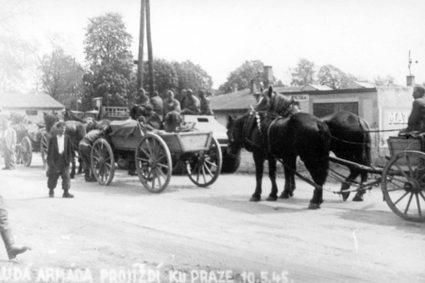
The Soviet army entering Theresienstadt, May 1945. Credit: Yad Vashem.
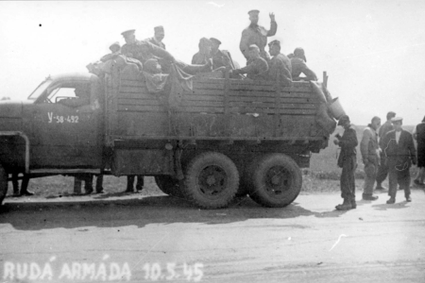
The Soviet army entering Theresienstadt, May 1945. Credit: Yad Vashem.
During the war, Pinchas learned to shut himself off from emotions. In the decades that followed his liberation, he was emotionally distant and had trouble connecting with his wife and children. He also experienced nightmares and flashbacks of the ghetto and concentration camps. After years of struggling to deal with his past, Pinchas started going to therapy and began to heal.
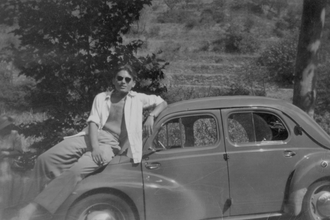
Pinchas with his new car. Paris, 1950.
My issues became even tougher as I tried to work through my memories. I struggled to cope. I was depressed and anxious but I forced myself to get up every day and go to work because, at the same time as I was learning how to live with what had happened to me in the war, I had to make a living. …
Every day, I was reliving the horror of the Holocaust and then forcing myself back to the realities of my current life and the responsibilities of a man with a family.
... but, slowly, slowly, it got better.
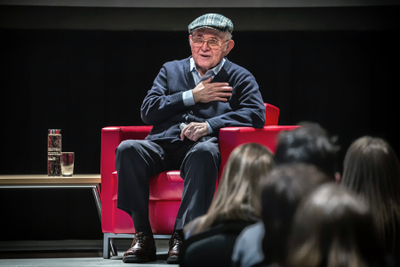
Pinchas sharing his story with students. Halifax, 2019.
There were several times when I had a few relapses — days, each time, of horrendous difficulties — but, slowly, slowly, it got better. Issues in the mind take a long time to heal.
Even having gone through horrendous trauma, after suffering post-traumatic stress and having depressions and nightmares, there is the possibility of still leading a reasonably decent life.
Even more importantly, perhaps, you can go out and tell people what actually happened and try, bit by bit, to create a world that is a little better than the one you have known.

